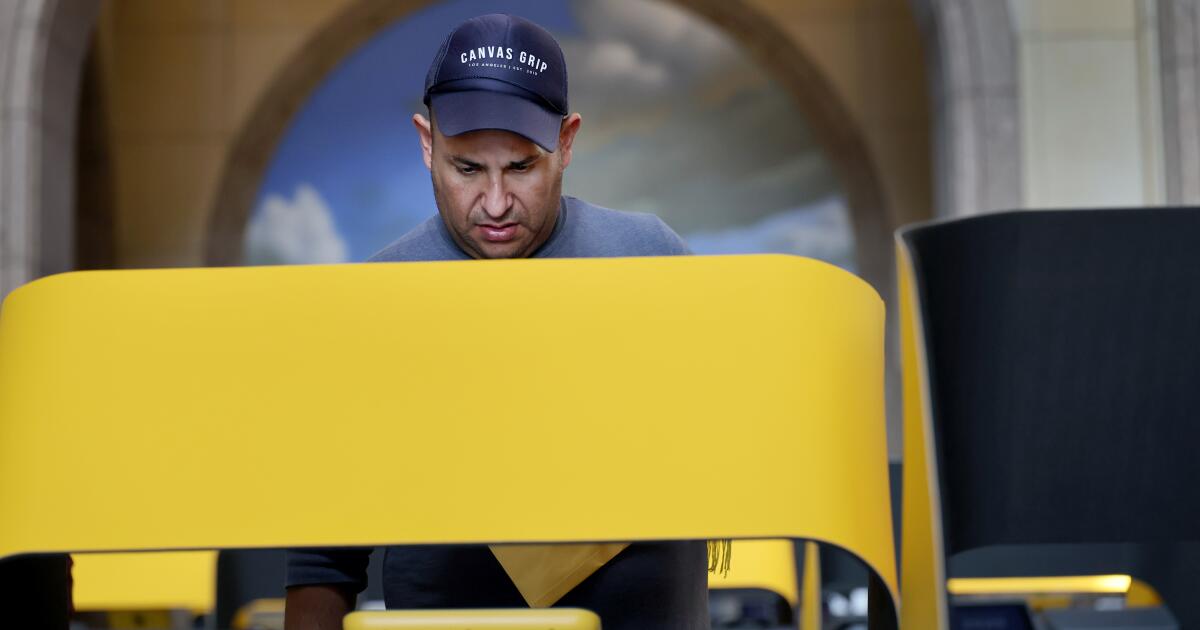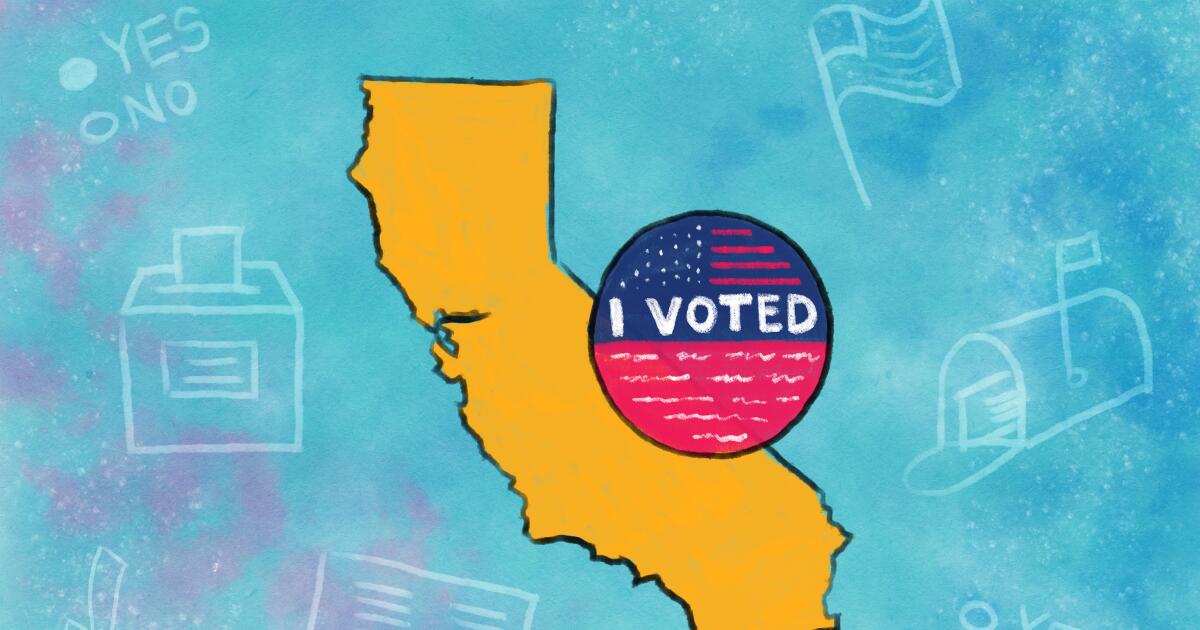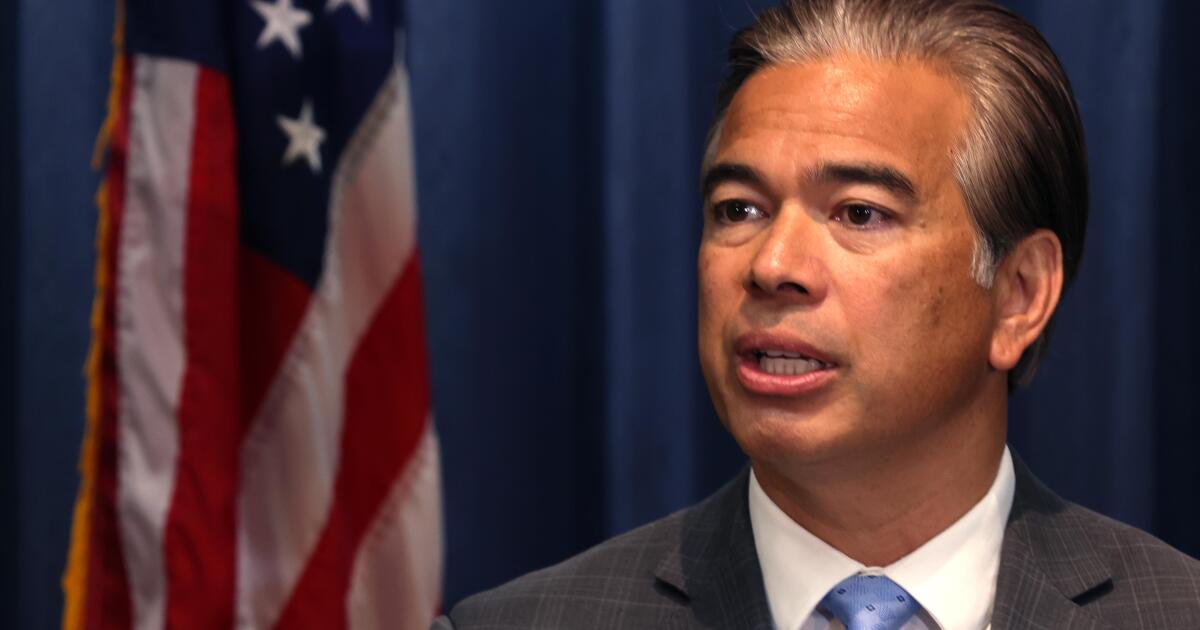To beat the election day rush: Here’s how to vote today in California
On Tuesday, voters will determine the fate of redistricting measure Proposition 50. But if you’re eager to vote in person, you don’t have to wait. You can easily pop into the polls a day early in many parts of California.
Where to vote in person on Monday
In Los Angeles County alone, there are 251 vote centers that will be open from 10 a.m. to 7 p.m. on Monday. (They’ll also be open again on Tuesday, election day, from 7 a.m. to 8 p.m.) At vote centers, you can vote in person, drop off your vote-by-mail ballot, or even register to vote and cast a same-day provisional ballot, which will be counted after officials verify the registration.
“Avoid the rush,” said Dean Logan, the L.A. County registrar-recorder/county clerk. “Make a plan to vote early.”
Also on Monday, San Diego County’s 68 vote centers are open from 8 a.m. to 5 p.m.; Orange County’s 65 vote centers from 8 a.m. to 8 p.m.; and Riverside County’s 55 vote centers and Ventura County’s nine vote centers between 9 a.m. and 5 p.m.
All of those vote centers also will be open on election day Tuesday from 7 a.m. to 8 p.m.
Other populous counties with a similar vote center system include the counties of Santa Clara, Alameda, Sacramento, Fresno, San Mateo, Stanislaus, Sonoma, Placer, Merced, Santa Cruz, Marin, Butte, Yolo, El Dorado, Madera, Kings, Napa and Humboldt.
Other counties have fewer in-person polling locations on Monday
San Bernardino County, however, only has six designated early voting poll stations. They’re open on Monday from 8 a.m. to 5 p.m., and also on election day from 7 a.m. to 8 p.m. Otherwise, San Bernardino County residents who want to vote in person on Tuesday can go to their assigned neighborhood polling location.
In Santa Barbara County, if you’ve lost or damaged a vote-by-mail ballot, you can request a replacement ballot through county’s elections offices in Santa Barbara, Santa Maria or Lompoc. Otherwise, voters can cast ballots at their assigned neighborhood polls on Tuesday.
How to drop off your vote-by-mail ballot
All Californian registered voters were mailed a vote-by-mail ballot. There are various ways to drop it off — through the mail, or through a county ballot drop box or polling place.
Ballot drop box or polling place
Be sure to get your ballot into a secured drop box, or at a polling place, by 8 p.m. on Tuesday. You can look up locations of ballot drop-off boxes at the California secretary of state’s or your county registrar of voters’ website (here are the links for Los Angeles, San Diego, Orange, Riverside, San Bernardino, Ventura and Santa Barbara counties).
In L.A. County alone, there are 418 drop boxes.
You can drop off your ballot at any polling place or ballot drop box within California, according to the secretary of state’s office.
Mailing your ballot
You can also send your ballot through the U.S. Postal Service. No stamps are needed. Note that your ballot must be postmarked by Tuesday (and received by the county elections office within seven days).
But beware: Officials have warned that recent changes to the U.S. Postal Service earlier this year may result in later postmarks than you might expect.
In fact, state officials recently warned that, in large swaths of California — outside of the metros of Southern California, the San Francisco Bay Area and the Sacramento area — mail that is dropped off at a mailbox or a post office on election day may not be postmarked until a day later, on Wednesday. That would render the ballot ineligible to be counted.
As a result, some officials are recommending that — at this point — it’s better to deliver your vote-by-mail ballot through a secure drop box, a vote center or a neighborhood polling place, rather than through the Postal Service.
“If you can’t make it to a vote center, you can go to any post office and ask at the counter for a postmark on your ballot to ensure you get credit for mailing your ballot on time,” the office of Atty. Gen. Robert Bonta said.
Most common reasons vote-by-mail ballots don’t get counted
In the 2024 general election, 99% of vote-by-mail ballots were accepted. But that means about 122,000 of the ballots, out of 13.2 million returned, weren’t counted in California.
Here are the top reasons why:
• A non-matching signature: 71,381 ballots not counted.
• Ballot was not received in time: 33,016 ballots not counted.
• No voter signature: 13,356 ballots not counted.
If the voter didn’t sign their ballot, or the ballot’s signature is different from the one in the voter’s record, election officials are required to reach out to the voter to resolve the missing or mismatched signature.
Other reasons included the voter having already voted, the voter forgetting to put the ballot in their envelope, or returning multiple ballots in a single envelope.


